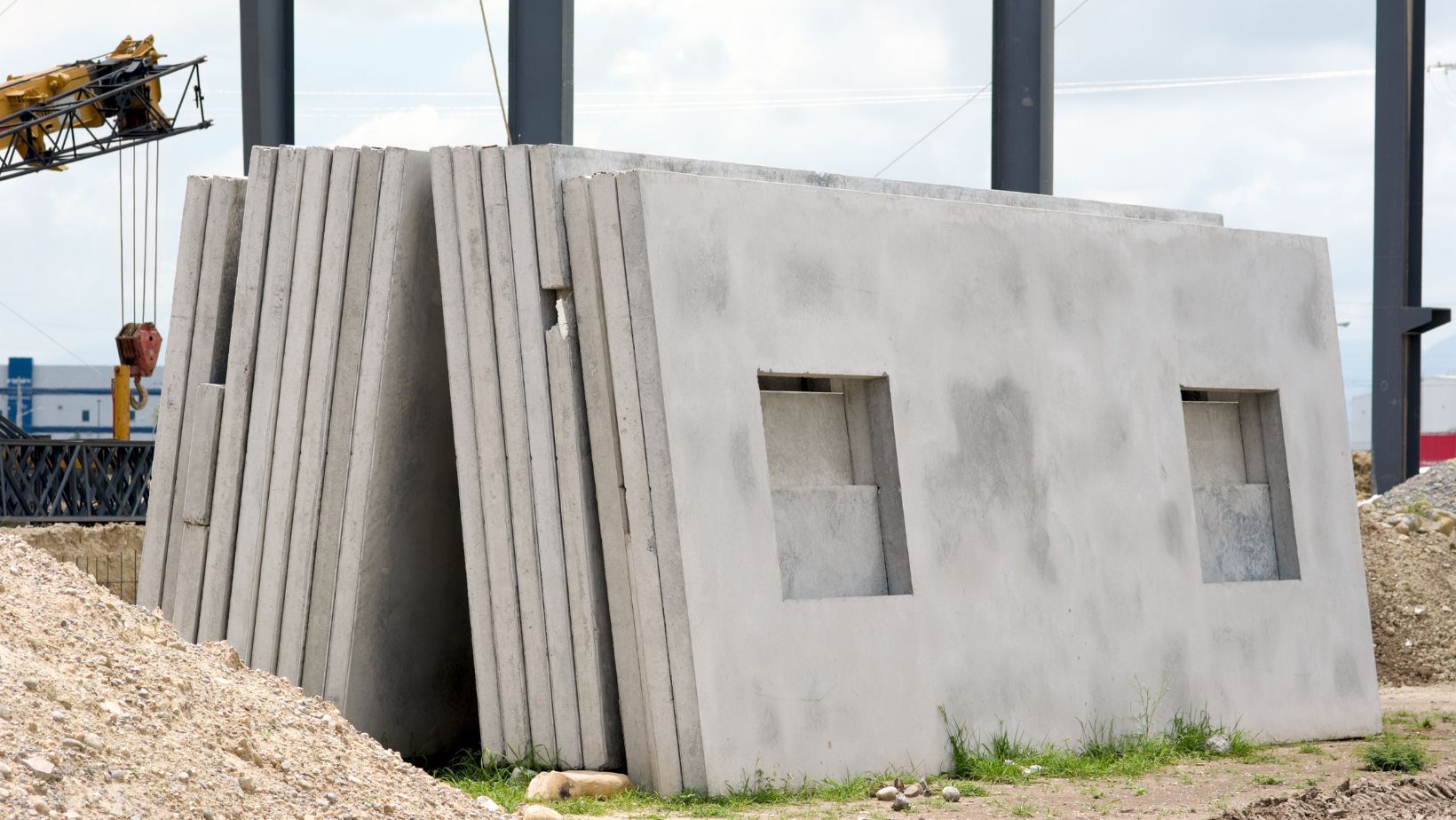
Additionally, reinforced concrete and combining concrete’s strength with steel’s tensile strength expands foundation design possibilities. Overall, concrete is vital for stability and durability in architectural structures. Kindly, explore below the precast concrete role in building foundations, its benefits, applications, and considerations for its use in construction projects.
What Exactly Is Precast Concrete?
Precast concrete is a product of the free fabrication of casting concrete in a unique mold or form, cured based on standard practices in a secured processing plant before installation. Unlike cast-in-place concrete, which is poured and cured on-site, precast concrete components are manufactured off-site, allowing faster quality construction.
The Role Of Precast Concrete In Foundation Construction
Uncover how precast concrete revolutionizes modern foundation construction, offering speed, quality, and adaptability. Explore its pivotal role in shaping resilient and sustainable infrastructure for future generations. Here are the common roles of precast concrete in foundations:
Speed And Efficiency
One of the primary advantages of using precast concrete in foundation construction is the speed at which it can be installed. Since precast elements are crafted off-site, construction can proceed at the site immediately, significantly reducing the overall project construction schedule.
This acceleration in the construction timeline can result in substantial cost savings and earlier or timely occupancy of the structure.
Quality Control
The detailed manufacturing process of precast concrete minimizes variations and defective final cast products, resulting in foundations performing far more durable exceeding engineering standards and regulatory building codes. Improved quality also translates to enhanced durability and longevity of the structure.
Structural Performance
The structural performance of precast concrete foundations is very strong, they can hold considerable loads of traffic weights and support buildings steadily. Precast elements are naturally robust and rigid, which makes them perfect for enduring earth pressures, settlement, and other outside forces.
Versatility
Diverse types of foundations have different building needs that can be met by precast concrete. It can be made in different shapes, sizes, and configurations, which lets complicated foundation systems be made that fit the needs of each project.
Precast concrete can work with distinct foundation layouts, whether the building is for a home, a business, or an industry. These are the common uses of precast concrete in foundation projects:

●Including shallow foundations
●Deep foundations
●Retaining walls
Environmental Sustainability
Using precast concrete to build foundations is under green building practices because it cuts down on waste, energy use, and environmental damage. Precast manufacturing facilities can recycle excess concrete, minimize water usage, and optimize production processes to enhance efficiency and sustainability.
In addition, precast elements are durable, requiring minimal maintenance and reducing the need for future replacements or repairs.
Applications Of Precast Concrete Foundations
By understanding the wide-ranging applications of precast concrete, builders and developers can harness its benefits to expedite construction productivity. Please read on the following notable applications of precast concrete foundations:
Residential Construction
Versatility is one feature that showcases the reliability of precast concrete foundations, they can also be used in many residential foundation setups. This includes the following structures:
●Single-family homes
●Multi-family homes
●Apartments
Precast foundations are a good choice for residential developers who want to speed up project schedules and keep building noise to a minimum in residential neighborhoods. They are indeed beneficial due to their seamless installation and versatility features to adapt to various demanding setups.
Commercial Buildings
Building foundation elements to exact specifications accelerates construction and keeps projects on schedule, which is especially helpful for business projects that need to be finished quickly. These are the lists where precast concrete is widely accepted for commercial use:
●Shopping malls
●Factories
●Schools
●Offices
●Sports Complex
Infrastructure Projects
Foundations made of precast concrete are also critical for constructing infrastructure projects due to their strength, durability, and not reacting to environmental factors, supporting heavy infrastructure loads under harsh circumstances. Here are some lists ideal for precast concrete foundations:
●Bridges
●Roads
●Utility structures
Considerations For Using Precast Concrete Foundations
Before you start building a foundation with precast concrete, there are a few things you should think about. These considerations will help you decide how long the foundation will last:
Site Access And Logistics
Transporting and setting up precast concrete parts needs careful planning to ensure there is enough access to the site and that all the logistics are coordinated. Using precast foundations may or not be possible or cost-effective depending on road limits, crane access, and site layout.
Engineering And Design
Proper engineering and design are essential for ensuring the structural integrity and performance of precast concrete foundations. Collaborating with experienced engineers and designers can help optimize foundation designs and address site-specific challenges, such as soil conditions, groundwater levels, and seismic risks.
Quality Assurance
Proper planning and design are needed to make sure that precast concrete foundations are stable and will work well.

Working with experienced engineers and designers can help you get the best foundation plans and deal with distinct site problems, like soil compaction, groundwater levels, and earthquake risks.
Cost Considerations
While precast concrete foundations offer cost savings in terms of construction speed and quality, upfront investment in molds, equipment, and transportation may impact project budgets. Conducting a comprehensive cost-benefit analysis can help evaluate the financial implications of using precast foundations compared to traditional methods.
Embrace The Sustainable Benefits Of Precast Concrete In Your Foundations!
This article highlights the innovative nature of precast concrete in revolutionizing foundation construction, emphasizing its contributions to efficiency and sustainability, including speed, quality control, structural performance, versatility, and environmental sustainability.
By prefabricating concrete elements off-site, construction projects can proceed more rapidly, resulting in cost savings and earlier occupancy of structures. The stringent quality control measures inherent in precast manufacturing ensure consistent product quality, exceeding engineering standards and regulatory requirements.















